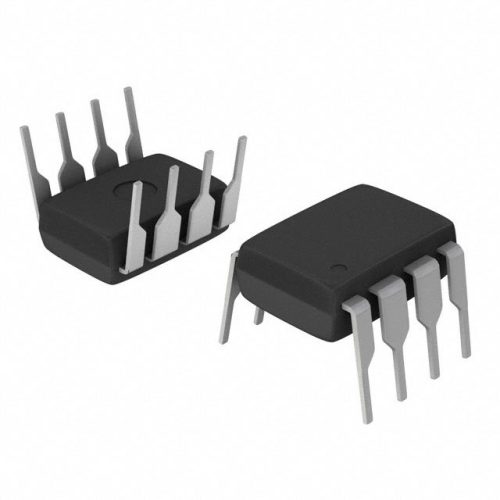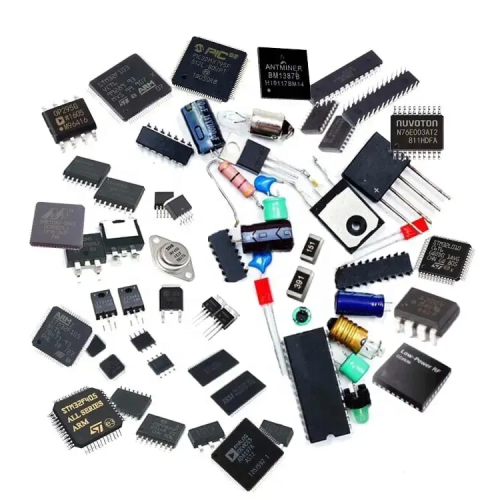HEDS-9731#J51 Overview
The HEDS-9731#J51 is a high-performance optical rotary encoder module designed for precise position sensing in industrial and automation applications. This device features a compact package with a 250 pulses per revolution (PPR) resolution, offering accurate and reliable feedback for motion control systems. Its robust construction and integrated components ensure consistent performance even in demanding environments. The encoder??s differential output signals facilitate noise immunity, aiding in stable and accurate data transmission. Engineers and sourcing specialists will find this product ideal for improving system control and efficiency. For detailed product sourcing and specifications, visit IC Manufacturer.
HEDS-9731#J51 Technical Specifications
| Parameter | Specification |
|---|---|
| Incremental Encoder Resolution | 250 pulses per revolution (PPR) |
| Output Type | Differential line driver (A, B, and Index signals) |
| Supply Voltage | 5 V ?? 5% |
| Electrical Interface | RS-422 compatible differential outputs |
| Operating Temperature Range | 0??C to +70??C |
| Incremental Output Channels | Two quadrature channels (A and B) plus an index (Z) channel |
| Output Current | ??20 mA maximum |
| Dimensions | Compact form factor suitable for tight integration |
| Mounting Style | Panel or PCB mount compatible |
HEDS-9731#J51 Key Features
- High-resolution incremental encoding: Provides 250 PPR, enabling precise angular position measurement essential for accurate motor feedback and speed control systems.
- Differential output signals: Utilize RS-422 compatible line drivers to ensure robust noise immunity, crucial for maintaining signal integrity in electrically noisy industrial environments.
- Wide operating voltage tolerance: Maintains consistent performance at a nominal 5 V supply with ??5% variation, allowing flexible integration into diverse power systems.
- Compact design: Enables easy installation in space-constrained applications without sacrificing performance or reliability.
- Integrated index channel: Provides a reference pulse once per revolution, facilitating accurate homing and synchronization in control loops.
- Reliable operating temperature range: Suitable for use in standard industrial conditions, ensuring stable function between 0??C and +70??C.
- High output current capability: Supports ??20 mA output current, allowing direct interfacing with a variety of industrial controllers and signal processing units.
HEDS-9731#J51 Advantages vs Typical Alternatives
This encoder module offers superior signal fidelity through differential outputs compared to single-ended designs, enhancing noise immunity and measurement accuracy. Its 250 PPR resolution strikes an optimal balance between precision and speed, outperforming lower-resolution alternatives. The integrated index pulse improves system synchronization, while the device??s compact size and standard voltage compatibility simplify integration into existing industrial control architectures, delivering enhanced reliability and ease of use.
🔥 Best-Selling Products
Typical Applications
- Precision motor control systems in industrial automation requiring accurate position feedback and speed regulation, such as CNC machines and robotics (the module??s robust differential signals and index channel enable reliable closed-loop control).
- Conveyor and material handling equipment where precise rotational measurement improves throughput and reduces mechanical wear.
- Automated assembly lines demanding consistent and noise-resistant encoder signals for high uptime and product quality.
- Instrumentation and measurement devices that need compact, reliable angular position sensors for accurate data acquisition.
HEDS-9731#J51 Brand Info
This product is part of a well-established line of optical encoders recognized for precision and durability in industrial applications. Known for integrating advanced optical technology with robust mechanical design, the brand??s encoder modules are engineered to meet stringent industrial standards. The device??s design focuses on delivering reliable incremental feedback with high immunity to electrical noise, making it a trusted component in motion control and automation systems worldwide.
FAQ
What is the resolution of the HEDS-9731#J51 encoder?
The encoder provides 250 pulses per revolution (PPR), which allows for detailed and accurate position sensing suitable for a wide range of industrial control applications.
🌟 Featured Products
-

“Buy MAX9312ECJ+ Precision Voltage Comparator in DIP Package for Reliable Performance”
-

QCC-711-1-MQFN48C-TR-03-1 Bluetooth Audio SoC with MQFN48C Package
-

0339-671-TLM-E Model – High-Performance TLM-E Package for Enhanced Functionality
-

1-1415898-4 Connector Housing, Electrical Wire-to-Board, Receptacle, Packaged
How does the differential output improve signal quality?
Differential outputs transmit signals via two complementary lines, which helps cancel out external noise and electromagnetic interference. This results in more reliable data transmission, especially important in electrically noisy industrial environments.
What is the typical operating temperature range for this device?
The encoder is designed to operate reliably within a temperature range of 0??C to +70??C, covering most standard industrial conditions without performance degradation.
📩 Contact Us
Can the encoder be integrated into existing 5 V systems?
Yes, it operates at a nominal supply voltage of 5 V with a tolerance of ??5%, making it compatible with typical 5 V industrial power systems and controllers.
What is the benefit of having an index (Z) channel in this encoder?
The index channel provides a single pulse per revolution that serves as a reference or home position signal. This is useful for system initialization, synchronization, and ensuring precise angular positioning in closed-loop control systems.






